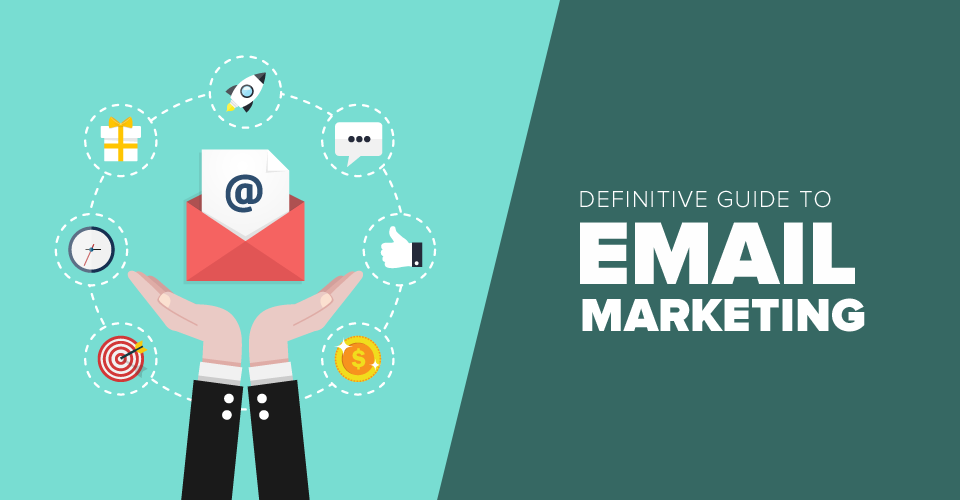Learn effective email marketing strategies, including list building and nurturing techniques, to engage subscribers and drive business growth.
Email marketing remains one of the most powerful tools for businesses to engage with their audience, nurture leads, and drive conversions. In this comprehensive guide, we’ll explore the best practices for building and nurturing your subscriber list to maximize the effectiveness of your email marketing campaigns.

1. Understanding the Importance of Building an Email List
a. Why Email Lists Matter
Your email list is a valuable asset for your business, providing a direct line of communication with your audience. Unlike social media platforms, where algorithms can limit your reach, email allows you to reach subscribers directly in their inbox, increasing the likelihood of engagement and conversions.
b. Benefits of a Quality Email List
- Higher Engagement: Subscribers who have opted in to receive your emails are already interested in your brand, leading to higher open and click-through rates.
- Increased Conversions: Email marketing consistently outperforms other marketing channels in terms of conversion rates, making it a highly effective tool for driving sales and revenue.
- Cost-Effective: Compared to traditional advertising methods, email marketing is relatively inexpensive and offers an excellent return on investment (ROI).
- Targeted Communication: With segmentation and personalization capabilities, you can tailor your messages to specific segments of your audience, increasing relevance and engagement.
2. Building Your Email Subscriber List
a. Creating Compelling Opt-In Forms
Opt-in forms are your primary tool for capturing email subscribers. Design forms that are visually appealing, easy to use, and prominently displayed on your website. Offer incentives such as discounts, exclusive content, or free downloads to encourage sign-ups.
b. Implementing Lead Magnets
Lead magnets are valuable resources or incentives offered in exchange for an email address. Examples include ebooks, whitepapers, webinars, or email courses. Create compelling lead magnets that address your audience’s pain points and provide genuine value.
c. Leveraging Social Media
Promote your email list on social media channels to reach a broader audience. Use social media posts, ads, and landing pages to encourage followers to subscribe to your email list. Highlight the benefits of subscribing and the type of content they can expect to receive.
d. Hosting Webinars and Events
Webinars and events are excellent opportunities to capture email leads. Require attendees to provide their email address when registering for the event. Follow up with attendees afterward to thank them for participating and invite them to join your email list for future updates.
3. Nurturing Your Email Subscriber List
a. Sending Welcome Emails
Welcome emails are your first opportunity to make a positive impression on new subscribers. Use this opportunity to thank them for subscribing, introduce your brand, and set expectations for future communications. Consider offering a special discount or exclusive content to new subscribers.
b. Providing Value-Driven Content
Deliver valuable content to your subscribers to keep them engaged and interested in your emails. Share educational resources, industry insights, product updates, and exclusive offers that resonate with your audience’s interests and needs.
c. Segmenting Your Audience
Segmentation allows you to divide your email list into smaller groups based on demographics, behavior, or preferences. Tailor your email content to each segment’s interests and characteristics to increase relevance and engagement. Common segmentation criteria include location, purchase history, and engagement level.
d. Personalizing Your Emails
Personalization is key to creating meaningful connections with your subscribers. Address recipients by name, recommend products based on their past purchases, and tailor content to their interests and preferences. Use dynamic content and merge tags to automate personalization at scale.
4. Optimizing Your Email Marketing Strategy
a. Testing and Experimentation
Regularly test different elements of your email campaigns, including subject lines, send times, and content formats, to identify what resonates best with your audience. Use A/B testing to compare variations and optimize your campaigns for maximum effectiveness.
b. Monitoring and Analyzing Performance
Monitor key metrics such as open rates, click-through rates, and conversion rates to gauge the success of your email marketing efforts. Use analytics tools to track subscriber engagement, identify trends, and make data-driven decisions to improve your campaigns over time.
c. Maintaining Compliance and Deliverability
Ensure your email marketing practices comply with relevant regulations, such as the CAN-SPAM Act and GDPR. Follow best practices for email deliverability, including using double opt-in, regularly cleaning your email list, and avoiding Spam tactics that could harm your sender reputation.
Email marketing remains a powerful tool for businesses to connect with their audience, nurture leads, and drive conversions. By implementing best practices for building and nurturing your subscriber list, you can create meaningful relationships with your audience and achieve your marketing goals.
Techtenstein is dedicated to helping businesses succeed in their email marketing efforts. By following these strategies, you can build a quality email list, deliver valuable content to your subscribers, and drive business growth through effective email marketing campaigns



